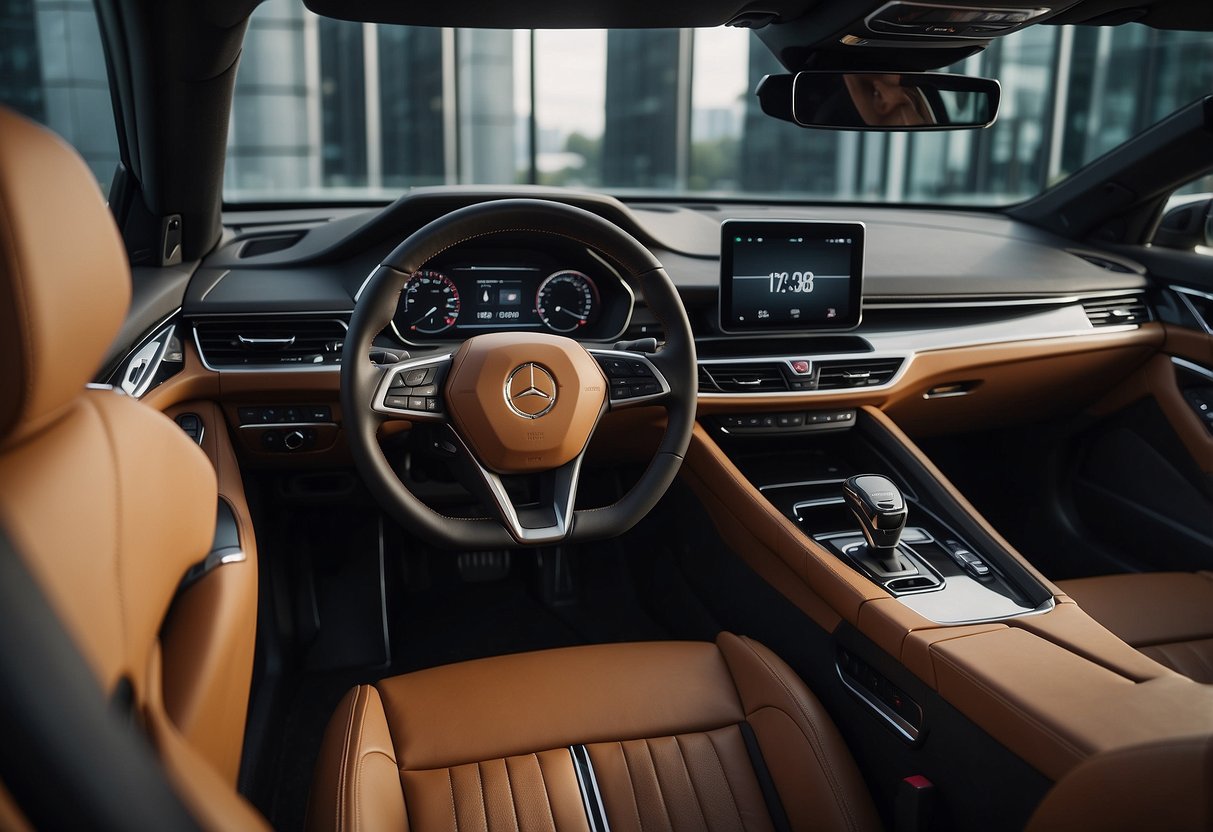
Acoustic Design
Acoustic design in car interiors primarily focuses on minimizing external noise and enhancing the sound experience within the vehicle. This balance is crucial for both comfort and audio quality.
Sound Insulation
Sound insulation is a critical aspect of acoustic design. It involves using materials and technologies that block, absorb, or dampen noise from outside the vehicle.
Manufacturers employ advanced materials like multi-layer laminated glass and special foam insulation. These materials reduce road and wind noise, making the cabin quieter. Effective insulation also includes sealing gaps around doors and windows to prevent sound leakage.
High-end vehicles often feature active noise cancellation systems. These systems use microphones and speakers to detect and cancel out unwanted sounds. This technology enhances the overall acoustic performance, providing a serene environment for both drivers and passengers.
Safety Features
Modern car interiors now embed advanced safety features that prioritize both proactive and reactive measures to protect passengers. This includes advanced integrated assistance systems and significant improvements in material durability and airbags.
Integrated Assistance Systems
Integrated assistance systems have evolved significantly. Features such as lane-keeping assistance and adaptive cruise control enhance driver awareness and reaction time. These systems use sensors and cameras to monitor the vehicle’s surroundings, providing alerts and automatic corrections when necessary.
Emergency braking systems can prevent collisions by detecting sudden obstacles and applying brakes autonomously. Blind-spot monitoring also enhances safety by detecting vehicles in hard-to-see areas, alerting drivers with visual or audible warnings. These technologies collectively work to reduce accidents and improve overall driving safety.
Material Durability and Airbags
Material durability in car interiors has a direct impact on safety. Manufacturers now use high-strength materials that can withstand severe impacts. Reinforced door panels and crumple zones are designed to absorb and dissipate energy during collisions, minimizing injury risk.
Airbags have also seen significant advancements. Modern vehicles feature multiple airbags, including curtain and knee airbags, strategically placed to protect occupants from various angles. Advanced sensors determine the severity of a crash and deploy airbags accordingly, ensuring optimal protection.
By focusing on these critical areas, manufacturers continue to enhance the safety of car interiors, providing passengers with advanced, reliable protection systems.
Aesthetic Trends
Car interiors are increasingly focusing on clean designs and bold color combinations to enhance driver and passenger experiences.
Minimalism and Simplicity
Modern car interiors emphasize minimalism and simplicity, creating spaces that feel uncluttered and serene. Automakers are reducing the number of physical buttons, replacing them with touchscreens and voice controls. This trend not only makes interiors look sleek and modern but also improves functionality.
Materials play a crucial role, with premium options like brushed metal, wood trims, and high-quality plastics being used to achieve a minimalist aesthetic. Lighting is another element; ambient lighting is strategically placed to enhance the simplicity and elegance, fostering a calming atmosphere inside the vehicle.
Color Trends and Contrasts
Color choices in car interiors are evolving, with bold contrasts and unique color palettes becoming popular. Darker hues like deep blues and blacks are often contrasted against lighter shades, such as cream or white, to create visual interest. This color strategy not only makes the interior look more spacious but also adds a touch of sophistication.
Automakers are experimenting with two-tone designs and custom color options. Accent colors, such as vibrant reds or cool grays, are used on stitching, dashboards, and seat trims to highlight design elements. These trends bring a personalized and luxurious feel to car interiors, allowing owners to express their individual tastes.



